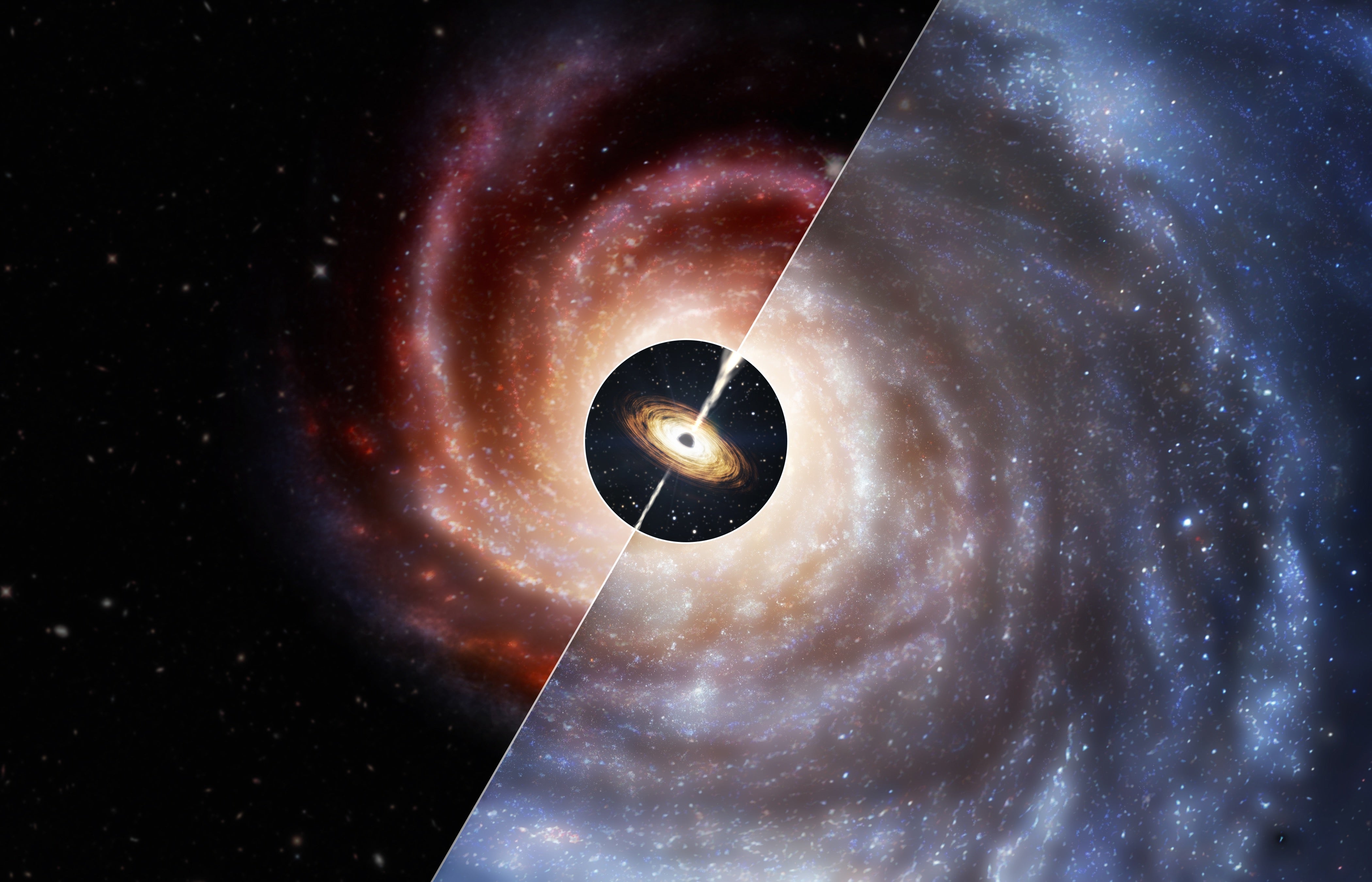These young supermassive black holes weigh more relative to their host galaxies than those today, supporting an idea called heavy seeding. | Published: January 24, 2024
JWST turns up even more heavier-than-expected black holes

In the two years since the James Webb Space Telescope (JWST) launched, astronomers are learning one thing: The early universe is a lot weirder than we thought.
JWST, which is the largest space telescope ever launched, is able to see back in time like never before thanks to a combination of its large mirrors and its sensitivity to infrared light. This means that it can see in stunning clarity objects whose light was emitted billions of years ago in the ultraviolet or visible portion of the spectrum, and has now been stretched by the universe’s expansion to longer wavelengths than optical telescopes like Hubble.
Astronomers are using it to peer back to near “cosmic dawn,” a time when the first stars and galaxies were forming. And JWST is showing that these early galaxies are different than astronomers had anticipated, in a plethora of ways: Some are settling into shapes we didn’t think were possible so early after the Big Bang. Others are unexpectedly large.
And recent research shows that even the black holes in the early universe were odd — they’re way bigger than they should be, relative to the mass of the galaxy around them. Unexpectedly, JWST is spotting mammoth black holes anchoring relatively small galaxies.
READ MOREhttps://www.astronomy.com/science/jwst-turns-up-even-more-heavier-than-expected-black-holes/
